How do we test the lenses?
2. Evaluation criteria
BUILD QUALITY – We evaluate whether the body build is solid, how it fits to the camera, if it has a comfortable grip, if its elements move smoothly, as well as the overall weight and bayonet construction.
PICTURE RESOLUTION – The test chart picture in RAW format is converted
(without any editing) to PPM/TIFF raw format by using the dcraw
program. Next, using the Imatest program, we determine the MTF
function courses based on spatial frequency (lpmm and LW/PH). The
resolution is measured in vertical and horizontal values as well as
in the center and at the edge of the frame (see the picture below).
Please Support UsIf you enjoy our reviews and articles, and you want us to continue our work please, support our website by donating through PayPal. The funds are going to be used for paying our editorial team, renting servers, and equipping our testing studio; only that way we will be able to continue providing you interesting content for free. |
- - - - - - - - - - - - - - - - - - - - - - - - - - - - - - - - - - - - - - - - - - - - - - - -
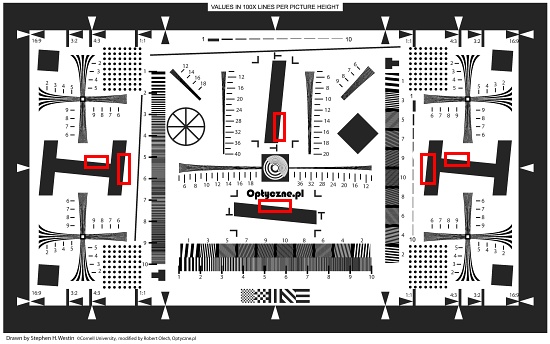
CHROMATIC ABERRATION – Is measured by the Imatest program in points
at a distance of 70% from the center of the frame (see the picture
below). The measurements are made only for latteral chromatic aberration.
We assume that all results below 0.04% are a negative
aberration, 0.04 to 0.08% are a small aberration and that 0.09 to
0.14% are an average aberration, while from 0.15 to 0.20 is a large
aberration and anything higher than 0.21 is a very large aberration.
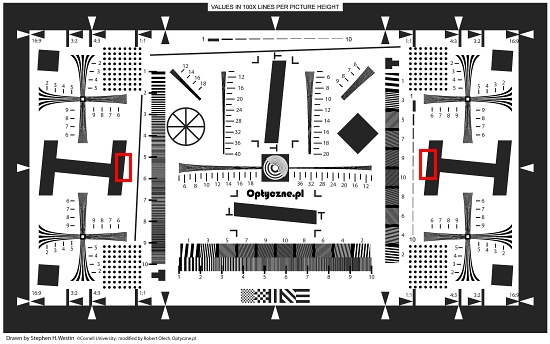
DISTORION – Is measured by the Imatest using the two diagonal ISO
test chart lines (see the first picture below) as well as on an
independent additional test chart specially prepared for distortion
measurements (see second picture). The results are consolidated.
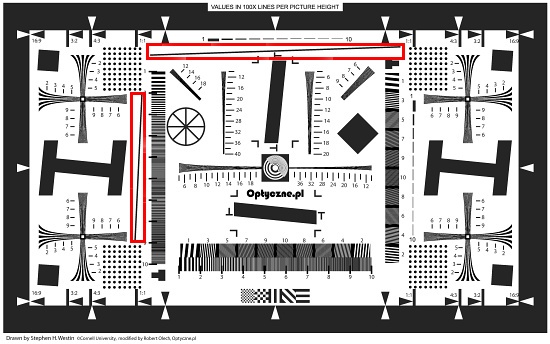
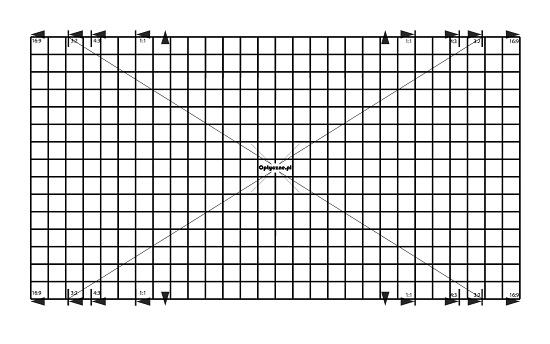
COMA AND ASTIGMATISM – Coma is measured using the pictures of the
star or diode, placed in the middle or in the corner of the frame. To
measure the astigmatism we compare the horizontal and vertical MTF50
values.
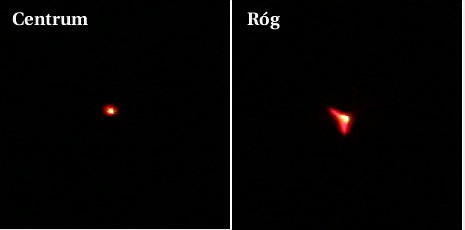
VIGNETTING – We take a picture of a white and evenly lit space and
then measure the vignetting (the light fall off in the corners of the
frame) by using the Light Falloff option in the Imatest program. The
light fall off is expressed in percentages and diaphragm values. We
usually take four to five pictures at each diaphragm value with the
camera being turned 90 degrees after each picture.
GHOSTING AND FLARES – We take pictures in bright contrasting light (sun, moon or lamps) and we evaluate the performance of the antireflective coatings with the unwanted light artifacts.
AUTOFOCUS – We evaluate the speed and loudness of the sharpness
adjusting mechanism as well as the number of times the lens failed to
accurately capture the target subject (for this we take into account
the result in which the measured MTF50 value is more than 20% worse
than the maximum achieved rate for the given diaphragm value). We
also check if the autofocus has any tendency towards front or back
focusing.






